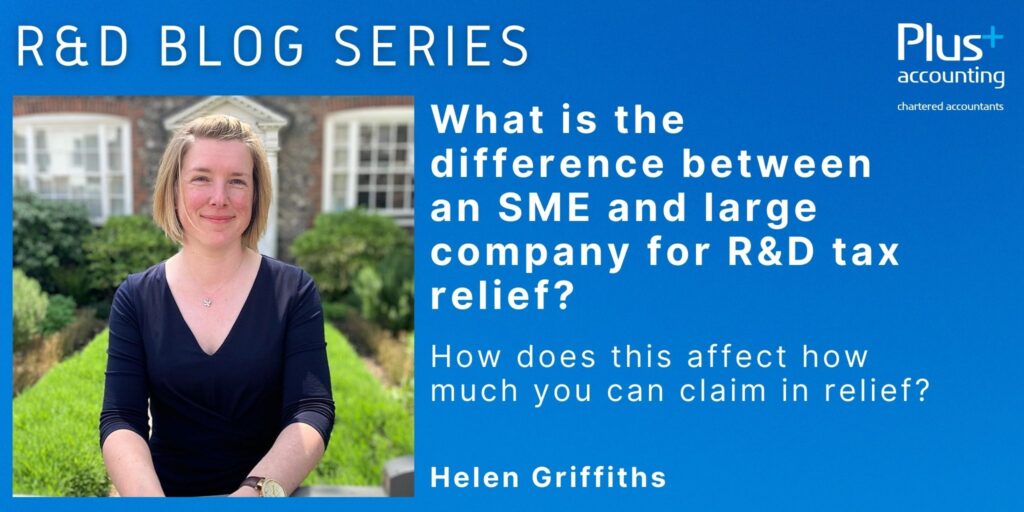How does this affect how much you can claim in relief?
There are two types of Research and Development (R&D) relief: ‘SME R&D Relief’ and ‘Research and Development Expenditure Credit (RDEC)’ and the type you can claim depends on the size of your company.
SME R&D Relief
SME R&D Relief is for small or medium sized companies meeting the following criteria:
- Less than 500 staff
- Turnover of less than 100 million euros or a balance sheet total under 86 million euros
- If you have linked companies, you may have to include these in working out whether you are an SME
If you are an SME then you can deduct 130% additional relief when calculating your taxable profits. Here is an example and how it impacts the tax you pay:
- Your company incurs eligible expenditure of £100,000, which can be deducted when calculating corporation tax.
- In addition to this the R&D relief of 130% is applied to the £100,000, making the total R&D expenditure deductible against profits of £230,000.
What if the company is loss-making?
SME R&D Relief allows a loss-making company to surrender their loss in return for a tax credit, worth a maximum of 14.5% of the surrenderable loss.
The amount a company can surrender is limited to the lower of 230% of qualifying R&D expenditure and the unrelieved trading loss.
This amount is then multiplied by 14.5% and is refunded to the company (**1). The company must be a going concern to make the claim.
RDEC
RDEC is for large companies although an SME can claim RDEC if they have been subcontracted to carry out R&D by a large company. RDEC works by giving a tax credit on qualifying expenditure, currently at 13%.
The RDEC is taxable and the way in which the RDEC credit is applied to the corporation tax liability follows a series of prescribed steps. These are not listed below but essentially the RDEC is set against the company’s corporation tax liability first and if any credit remains after this, several steps are applied before the final amount of credit remaining is paid to your company.
The above is based on rates at the current time and there are several conditions attaching to R&D claims, which can also be affected by when changes in rates and definitions take effect. The information above is to give a simple overview. It is recommended that you seek professional advice when considering an R&D relief claim.
Links
Claiming Research and Development tax reliefs
R&D Blog Series
There will be several blogs in this R&D series:
**1 Certain restrictions can apply to the amount of the loss refunded, your accountant can advise you in your specific circumstances.
Disclaimer – Please be aware that the information provided in this article only applies up to 31 March 2023.

Author: Helen Griffiths, Accounts and Audit Manager, Plus Accounting
Any views or opinions represented in this blog are personal, belong solely to the blog owner and do not represent those of Plus Accounting. All content provided on this blog is for informational purposes only. The owner of this blog makes no representations as to the accuracy or completeness of any information on this site or found by following any link on this site


